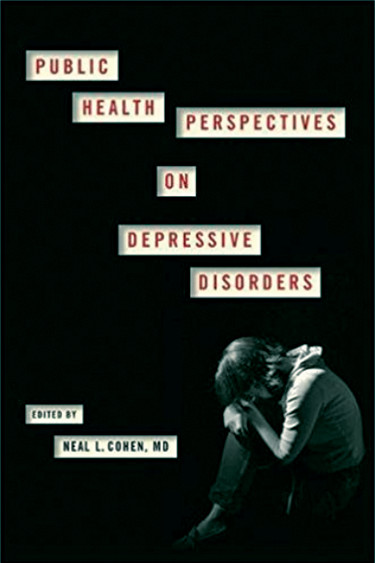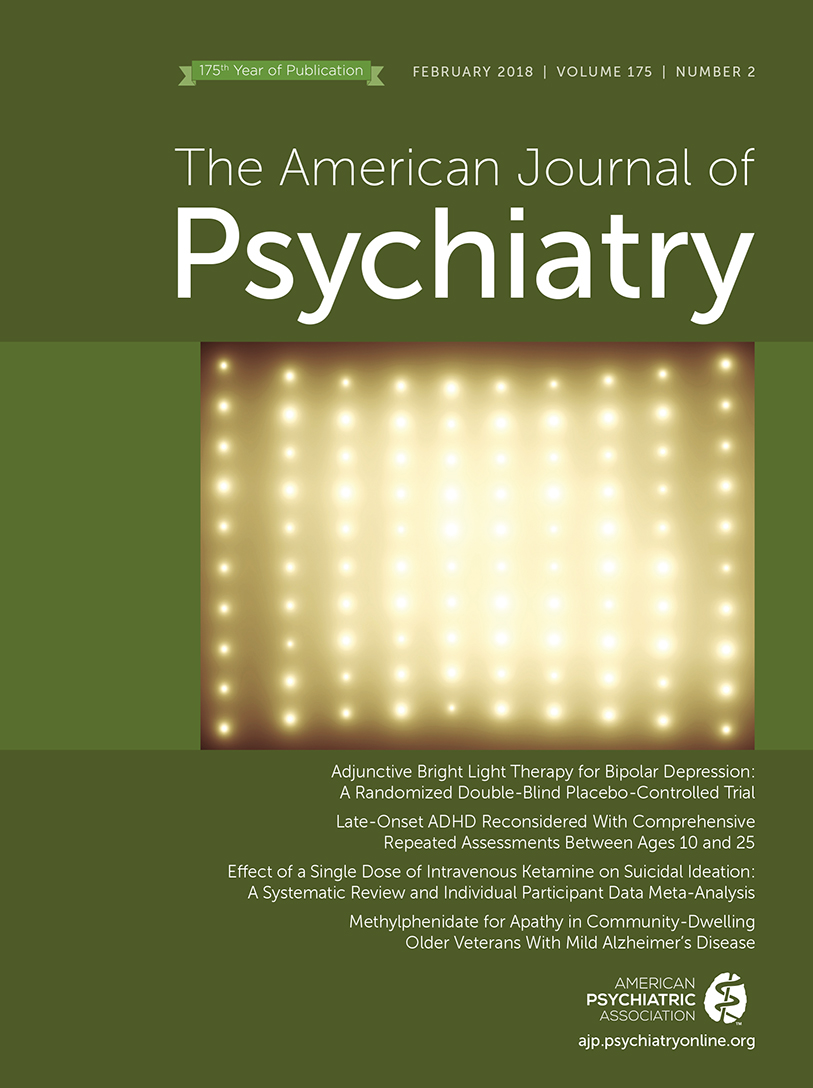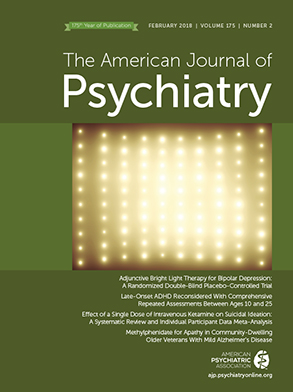Public Health Perspectives on Depressive Disorders, edited by Neal Cohen, M.D., is an ambitious and comprehensive book that details multiple aspects of the public health dimensions of major depressive disorder. The editor has gathered national experts in the public health field of depression to address numerous complex aspects of how depression affects public health, how societal forces influence depression, and how we (both in primary care and in mental health specialty fields) can begin to effectively address the enormous burden that depression places on society.
The book provides an excellent overview of a wide range of topics regarding depression, and it serves as a useful guide to the academic and clinician alike in mental health.
The prologue to the book provides a nice summary of the history of epidemiological study of major depressive disorder. The main body of the book is divided into three parts; each section addresses different public health aspects of the disorder.
Part 1 of the book, “Impact,” provides a general overview of the impact of major depressive disorder on society, its frequent comorbidities, and the phenomena of “dual diagnosis” of major depression and substance use disorders. Several key points are emphasized in these sections, including the profound worldwide impact of major depression as described in the World Health Organization Global Burden of Disease study; a 2000 update of this study ranks unipolar depression as the third leading cause of disease burden in the world, with a prediction that major depressive disorder will become the number one cause of disability by 2030. The authors point out that this is likely an underestimation because the study does not take into account disability from mortality from depression (e.g., suicide, cardiovascular disease). Major depressive disorder is described as a recurring illness, with clinical samples demonstrating a very high relapse rate (75% at 10 years); furthermore, the disorder often demonstrates continuity from adolescence to adulthood and is most frequently acute in nature (85%). These chapters highlight the important interplay between genetics and environmental factors that influence major depression, with environment perhaps playing a more critical early role (in childhood and adolescence) and genetics being more influential later in life.
There is ample and detailed discussion of the comorbidity of major depression with general medical illness and substance use disorders. Regarding the former, the authors argue that there is an interplay between general medical illnesses and major depression, with failure to successfully treat depression leading to poor medical outcomes, worse functional impairment, and increased medical costs. Several medical illnesses are identified as having close connections with major depression, including cardiovascular disease, arthritis, and hypertension. The authors propose, given that the preponderance of depression is seen in primary care settings, that collaborative care models, as currently practiced in Europe, which “embed” mental health treatments within primary care, provide a method for identifying and treating depression and its frequent general medical comorbidities.
In addition, an entire chapter is devoted to describing the frequent comorbidity of substance use disorders and major depressive disorder. Comorbidities of these disorders are common, with the primary comorbid substance use disorders in the United States being nicotine and alcohol use disorders (lifetime prevalence of 17.7% and 30.3%, respectively). The authors point out that awareness of comorbid substance use disorders must enter into any large-scale depression treatment study, as exemplified by the 9%−25% incidence of substance use disorders in the STAR*D trial, which was sponsored by the National Institute of Mental Health and was the largest serial antidepressant treatment trial conducted to date. The authors provide a detailed analysis of the causal and chronological links between major depression and comorbid substance use disorder. The authors conclude that the evidence does not clearly support either disorder being an antecedent and that each disorder often complicates or worsens the other. The necessity of adequately treating both disorders simultaneously is emphasized.
Part 2 of the book discusses specific influences on major depression, including socioeconomic inequalities, maternal depression, and stigma. The authors demonstrate that socioeconomic status is inversely correlated with major depression and that the chronicity of major depression strengthens this correlation. The authors comprehensively argue that this inverse relationship is likely more related to lower socioeconomic status (and the stressors associated with this) leading to major depression, rather than major depression leading to lower socioeconomic status, although there is support for some “downward drift” in socioeconomic status with depression. The components of low socioeconomic status that contribute to major depression are described and include lower education and income, as well as unemployment. Notably, the authors state that minority status, while frequently associated with lower socioeconomic status, has not been correlated consistently with major depression; in the United States, several large studies demonstrated that African Americans have lower rates of major depression than white Americans, even when adjusting for socioeconomic status. The authors provide multiple areas for future research, including efforts to lower stress in populations with low socioeconomic status and targeting mental health treatments to these populations, who are typically underserved.
The powerful link between maternal and child major depression, as well as intergenerational depression transmission, is thoroughly explored in a separate chapter. The authors argue that prenatal and perinatal major depression places a child at higher risk for depression and other psychiatric disorders later in life. In fact, chronic maternal major depression is thought to be an even more powerful predictor of depression, as is comorbid anxiety disorder, substance use disorder, and antisocial personality disorder. Evidence gathered in longitudinal studies demonstrates that major depression can be passed through three generations (grandparents>parents>child). The maternal-child major depression transmission mechanism is not completely clear, but the authors suggest that psychosocial factors, most powerfully incapacitated parenting, along with some biological predisposition to major depression, are heavy contributors. Optimistically, successful maternal major depression treatment appears to reduce the likelihood of major depression transmission to children.
The influence of the effects of stigma on major depression occurrence and pursuit of treatment is also explored by the authors. Efforts to improve public understanding of major depression and mental illness are proposed as a means of lowering stigma and helping individuals with major depression pursuing treatment.
Part 3 of the book includes 10 chapters that explore a wide range of topics related to public health and major depression. The effects of major depression in children are fully explored in one chapter, as major depression is a leading cause of disability in people ages 10–19 and suicide the second leading cause of death in this age range. The authors argue that early intervention, including school-based programs for screening, as well as family interventions, is critical for identifying and treating major depression in children. Furthermore, like adults, screening for and treatment of major depression in the primary care system, where most children do come into contact with health care, could lead to improved outcomes.
Another chapter explores the critical topic of suicide and major depression from a public health perspective. This chapter is particularly relevant given the disturbing recent data collected by the Centers for Disease Control and Prevention showing a continued increase in suicide rates in the United States and the close association of major depression and suicide. The authors review numerous studies demonstrating that antecedent major depression places individuals at high risk for suicidal ideation and suicide attempts. Large factor analysis studies have found that comorbid major depressive disorder is, by far, the greatest single contributing factor to people attempting suicide. The authors discuss the critical importance of rapid mental health follow-up after hospitalization for suicide in reducing suicide; studies in the United Kingdom demonstrated that 1-week postdischarge follow-up after hospitalization for suicidal ideation markedly lowered suicide rates. Sadly, fewer than 50% of hospitalized suicidal patients in the United States receive mental health follow-up in the first week postdischarge, and only two-thirds receive follow-up 1 month following discharge.
Part 3 contains additional interesting chapters on diverse topics, including major depression in the elderly, the use of technologies in identifying and treating major depression, racial and ethnic disparities in major depression, and preventing onset of major depression, among other topics.
In summary, Public Health Perspectives on Depressive Disorders is a superb collection of essays discussing critical and emerging topics in the public health field regarding major depressive disorder. Given the very high prevalence of major depression and its huge impact on disability and morbidity, this book is highly relevant and important.


